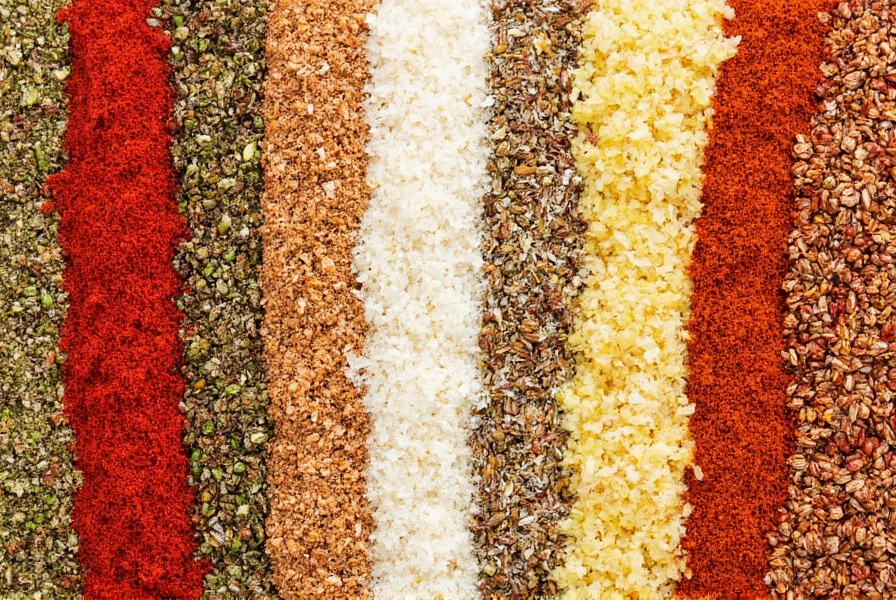Spice Up Your Life: 7 Irresistible Twists on the Classic Low Country Seafood Boil
Table of Contents
- Introduction: A Taste of Coastal Fire
- What Exactly Is a Low Country Seafood Boil?
- The Spice Profile Behind the Boil
- 7 Spicy Twists to Elevate Your Boil
- Buying Guide: Choosing the Right Seasonings
- Conclusion: Boil Like a Pro, Season Like a Local
Introduction: A Taste of Coastal Fire
If you've ever been near the American South's coastline, especially in Georgia or South Carolina, there's a good chance you’ve encountered the Low Country Seafood Boil. It’s more than just a dish—it’s a celebration. Fresh shrimp, crawfish, crab legs, corn, and potatoes all boiled together in one giant pot of flavor. But what truly brings this Southern staple to life? The spices.
In this post, we’ll dive into the spicy soul of the Low Country boil, explore regional variations, and give you seven ways to kick up the heat at your next backyard gathering. Whether you’re a seasoned pro or a curious home cook, you’ll walk away ready to impress—and ignite—a crowd.
What Exactly Is a Low Country Seafood Boil?
The Low Country boil is also known as Frogmore Stew—named after the small town in South Carolina where it was first made popular. Originally a shrimp boil, it expanded to include a variety of shellfish, along with vegetables and sausage for added heartiness.
The beauty of this method lies in its simplicity: everything cooks in one pot, soaked in a briny, spicy broth that infuses every bite. No need for multiple pans or complicated prep. Just toss in the ingredients, add water, bring to a rolling boil, and simmer until done.
While recipes vary by region and personal taste, one constant remains—the punchy, aromatic blend of spices that defines its flavor profile.
The Spice Profile Behind the Boil
The magic of a great seafood boil comes from its spice mix. Traditionally, this includes:
- Old Bay seasoning
- Cayenne pepper
- Crushed red pepper flakes
- Garlic powder
- Onion powder
- Bay leaves
- Lemon slices (for brightness)
These are usually thrown into the boiling water early on so the flavors have time to meld and penetrate the ingredients.
Regional Variations
Different parts of the South tweak the spice levels and ingredients based on local preferences. Here's a quick comparison:
| Region | Spice Level | Common Additions |
|---|---|---|
| Georgia Coast | Moderate | Sausage, Lemon Wedges |
| South Carolina Inland | Medium-Hot | Red Pepper Flakes, Garlic Butter |
| Louisiana Style | Extra Hot | Cajun Blend, Andouille Sausage |
7 Spicy Twists to Elevate Your Boil
If you want to take your seafood boil from “classic” to “conversation starter,” here are some fun, flavorful, and fiery ideas to try:
-
Add Ghost Pepper Oil for Extreme Heat
For those who love intense heat, a few drops of ghost pepper oil can transform your entire batch. Use sparingly!
-
Mango Habanero Rub
Mix ground habanero with dried mango powder and citrus zest for a sweet-and-spicy twist that pairs perfectly with shrimp.
-
Smoked Paprika + Brown Sugar
A sweet-smoky combo that adds complexity. Especially great when brushing over corn or potatoes before serving.
-
Lime-Cumin Crust
Dry roast cumin seeds, grind them, and mix with lime zest. Sprinkle over the seafood after boiling for a refreshing zing.
-
Thai Basil Finish
Toss freshly chopped Thai basil over the top of your finished boil. Its anise-like flavor plays beautifully with seafood and chili.
-
Harissa Paste Infusion
Swirl a teaspoon of harissa paste into your boil water for a North African flair that packs a punch.

-
Gochujang Glaze Option
After boiling, brush your seafood with a diluted gochujang glaze (mix with honey and sesame oil) for a Korean-inspired kick.
Buying Guide: Choosing the Right Seasonings
Picking the right spice mix for your seafood boil can make or break the experience. Here’s a handy guide to help you choose the best products available:
Top 5 Seafood Boil Seasoning Blends
| Product Name | Key Ingredients | Heat Level | Best For | Occasion |
|---|---|---|---|---|
| Zatarain’s Crawfish, Shrimp & Crab Boil | Mustard, Red Pepper, Allspice | Mild-Medium | Classic Southern boils | Family dinners, casual gatherings |
| Old Bay Seasoning | Celery Salt, Mustard, Paprika | Low | Chesapeake Bay style seafood | Traditionalists, seafood lovers |
| Cajun Injector Seafood Boil Mix | Cayenne, Garlic, Onion | Medium-Hot | Cajun and Creole dishes | Kitchen parties, Mardi Gras events |
| Shark Brand Cajun Seafood Boil | Chili Peppers, Salt, Paprika | Hot | Spicy Southern dishes | Bachelor parties, chili contests |
| Frank’s RedHot Louisiana Style | Cayenne, Vinegar, Garlic | Very Hot | Fire lovers | Summer cookouts, extreme spice challenges |
DIY Boil Bags: Customize Your Own Mix
Many stores now sell customizable “boil bags” where you can pick your own spices and portion sizes. These are ideal if you prefer control over heat levels and want to experiment without buying multiple bottles.
Look for brands that offer organic options, minimal preservatives, and customizable heat levels.
Conclusion: Boil Like a Pro, Season Like a Local
The Low Country seafood boil isn’t just a meal—it’s a sensory experience. With the right blend of spices, you can turn a humble pot of shellfish and veggies into a vibrant, mouthwatering feast that captures the essence of coastal living.
Whether you stick to tradition or dare to spice things up with global flavors, remember: the key is balance. Too much heat can overpower delicate seafood, but the perfect blend can elevate every bite.
So grab your pot, gather your friends, and let the spices fly. After all, a little fire never hurt anyone—at least not when it tastes this good.










 浙公网安备
33010002000092号
浙公网安备
33010002000092号 浙B2-20120091-4
浙B2-20120091-4